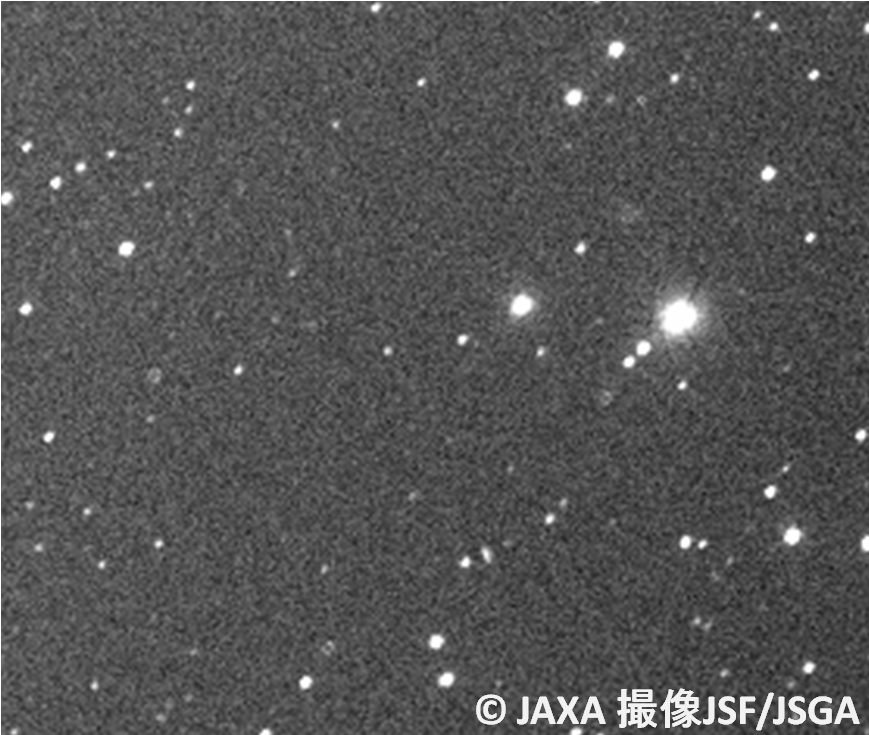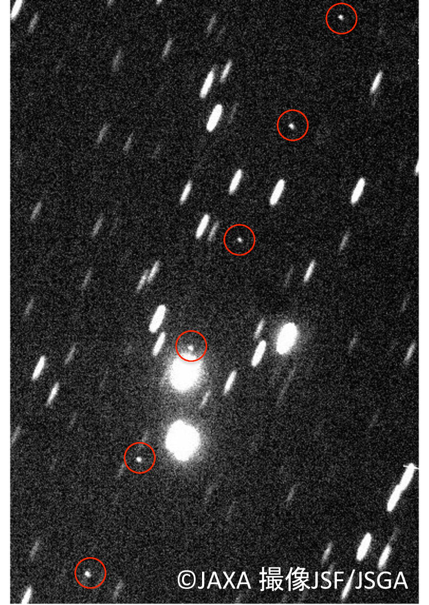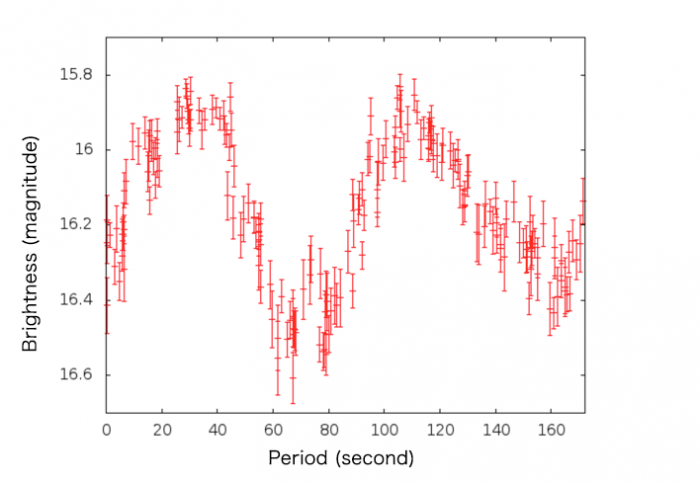Movement of Asteroid 2018 EZ2 (c) JAXA (Captured by JSF/JSGA)
A video produced from the five images of asteroid 2018 EZ2 captured by the Bisei Spaceguard Center between 10:09:42121 PM and 10:11:52832 PM on 13 March 2018 Japan time over a 6 second exposure.
A research group from the Japan Aerospace Exploration Agency (JAXA) and the Japan Spaceguard Association (JSGA) made observations of the light curve (*1) of near Earth asteroid 2018 EZ2 on the 13th of March 2018 Japan time at the Bisei Spaceguard Center (*2). This asteroid was determined to be spinning at a rate of once every 172 seconds. Additionally, the asteroid's shape was found to be long and thin, with an axial ratio of 1.7 to 1.0.
The JAXA research and development department discovered this asteroid at the Siding Spring Observatory in Australia at 7:05 PM on the 12th of March Japan time. By making their observations as the asteroid grew in brightness directly after discovery, the department succeeded in detecting the asteroid while it spun at such a high speed. According to the Jet Propulsion Laboratory (JPL) in the United States, this asteroid came as close as 210,000 km from the Earth (within the lunar orbit) at 11:41 AM on the 14th of March Japan time.
The diameter of the asteroid was estimated to be 20 meters, roughly the same size as the Chelyabinsk meteorite that struck Russia in 2013, causing significant damage. The asteroid has a strong inner structure that can withstand the centrifugal force created by high speed rotation. The results of these observations will help to clarify the physical conditions of asteroids approaching Earth.
Note 1: A light curve refers to the data for changes in the brightness of an asteroid over time. If you are able to obtain the light curve, you can estimate the shape and rotation period.
Note 2: Bisei Spaceguard Center: An observatory jointly operated by the Japan Aerospace Exploration Agency (JAXA), the Japan Space Forum (JSF), and the Japan Spaceguard Association. The observatory mainly observes space debris and small solar system bodies.
Figure 1: A composite of the 6 images captured in succession over 10 seconds of exposure beginning at 11:45 PM on the 13th of March 2018 Japan time at the Bisei Spaceguard Center. The astronomical object circled in red is asteroid 2018 EZ2. The field of view is roughly 40'x60'. The top of the image is north, the left east.
(c) JAXA (Captured by JSF/JSGA)
Figure 2: Changes in brightness accompanying the rotation of asteroid 2018 EZ2. The horizontal axis corresponds to one rotational period (approx. 172 seconds). Because the asteroid is distorted in shape, the amount of area on the asteroid reflecting the sun changes with rotation. By measuring this periodic change in brightness, it is possible to approximate the shape of the asteroid as well as its rotational period.



